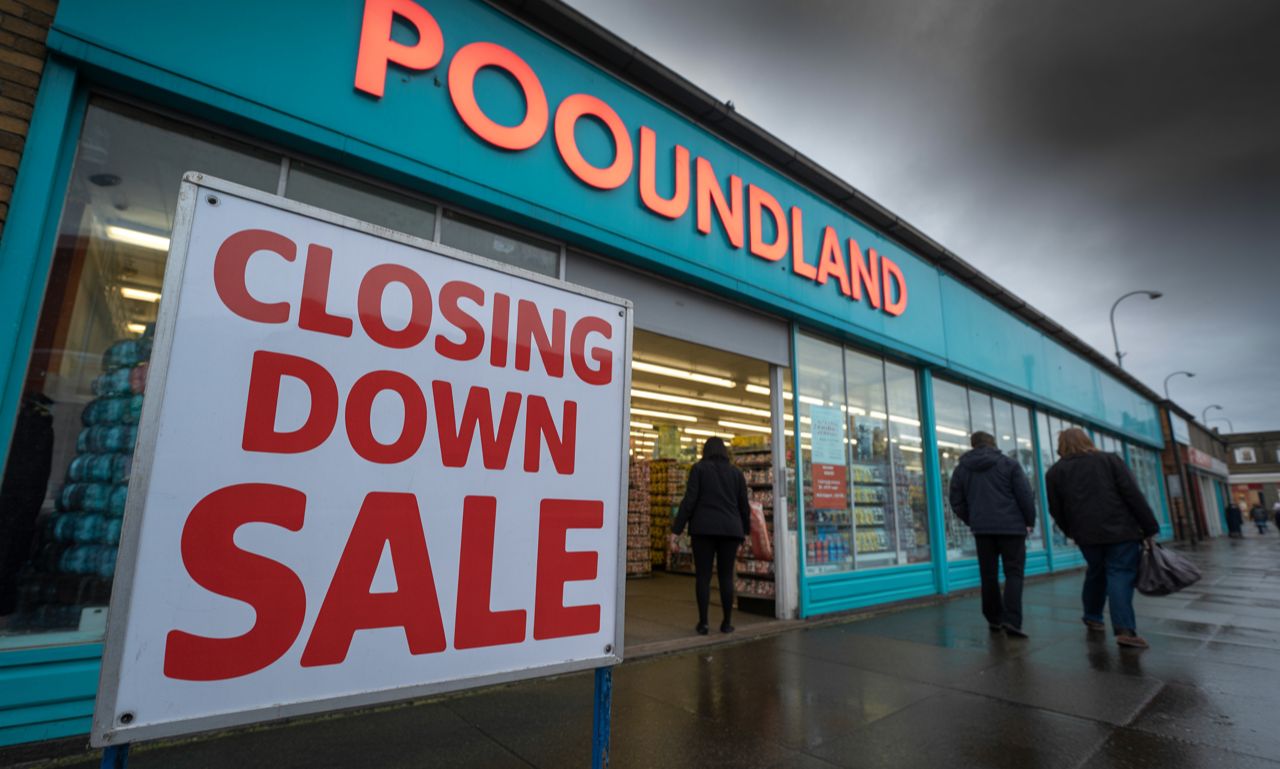Poundland has been a household name in the UK, offering budget-conscious shoppers a wide range of affordable essentials for years. However, recent news about potential store closures has struck a chord with loyal customers and industry watchers alike. What’s driving this shift, and what does it mean for shoppers who rely on Poundland during challenging economic times?
This blog will unpack the reasons behind these closures, explore the broader implications for the retail industry, and what it means for consumers moving forward.
The Context Behind Poundland Store Closures
Declining Sales and Financial Challenges
Poundland has faced significant financial hurdles, most notably a 7.3% decline in like-for-like sales during Q4. Declining revenue figures have left the company struggling to maintain profitability, forcing tough decisions, including closing underperforming locations.
Economic conditions haven’t helped, either. Persistent inflation and shifts in consumer spending habits are affecting retailers across the UK. With prices of everyday necessities rising, the typical Poundland shopper has been forced to prioritize spending even further. Ironically, even discount retailers are not immune to these pressures, as they must also manage rising supply chain and operational costs.
Separation from the Pepco Group
Adding another layer to the story, Pepco Group recently made the bold decision to sell Poundland for “effectively a pound”, reflecting their intent to shift focus away from the brand. For shoppers, this raises important questions regarding what future ownership might mean for Poundland’s offerings and accessibility.
Barry Williams and the Turnaround Strategy
One bright spot in the narrative is the return of Barry Williams as managing director of Poundland. Williams is no stranger to turning fortunes around, having a proven record of driving growth during challenging times.
Under his leadership, the focus is shifting back to Poundland’s “core heritage strengths.” Among these are a simpler and more transparent pricing model, improved product offerings, and a renewed emphasis on delivering value to customers.
While the strategy sounds promising, the real test will lie in its ability to re-establish trust and loyalty among shoppers. Will these changes help combat the competitive pressures Poundland faces in an evolving retail landscape? Only time will tell.
Poundland Store Closures is Steps Toward Recovery
To regain its footing, Poundland needs to address several key areas:
- Customer Experience: Enhancing in-store layouts and ensuring product availability.
- Pricing Transparency: Sticking to straightforward pricing strategies that resonate with customers.
- Community Engagement: Strengthening the connection with local communities to foster loyalty.
What Poundland Store Closures Mean for Shoppers
Reduced Accessibility to Affordable Essentials
For many UK families, Poundland has been a go-to destination for affordable products—from cleaning supplies to basic groceries. If closures occur, shoppers may face longer travel distances to access their nearest store or must turn to other options that might not be as affordable or conveniently located.
Impact on Low-Income Communities
The potential closures become even more significant when considering the cost-of-living crisis. Communities with limited access to other budget stores will likely feel the brunt of Poundland’s downsizing. For some, these stores offer a lifeline for stretching their budgets on everyday essentials.
Alternatives for Shoppers
If Poundland reduces its presence, customers may need to look to competitors like B&M, Home Bargains, or even online marketplaces for similar value. However, these aren’t always a perfect substitute, as they may lack Poundland’s unique mix of affordability and accessibility.
Poundland Store Closures :The Ripple Effect on the UK Retail Industry
Poundland’s challenges also reflect broader trends affecting brick-and-mortar stores:
- Competing with Online Retailers: E-commerce giants like Amazon offer convenience and competitive pricing, edging out traditional retailers.
- Changing Shopper Behavior: Consumers increasingly gravitate toward subscription services and direct-to-consumer brands, leaving discount chains to compete for dwindling foot traffic.
- Cost Pressures: Rising energy prices and supply chain disruptions are hitting the entire retail sector, stretching thin even the most resilient businesses.
While Poundland’s struggles are unique in some ways, they underscore the larger uphill battle for brick-and-mortar discount retailers to stay relevant in the digital age.
Poundland Store Closures :Potential Outcomes and Future Outlook
A Successful Turnaround
If Barry Williams and his team execute their strategy effectively, Poundland could emerge stronger. By focusing on its heritage, simplifying pricing, and reconnecting with its customer base, there’s potential to regain consumer trust and rebuild market share.
Continued Challenges
However, failure to adapt quickly and decisively could result in further closures and, ultimately, Poundland losing its competitive edge. The outcome might depend heavily on whether any new ownership aligns with Poundland’s core mission of providing affordability.
Rebuilding Customer Loyalty
To re-establish itself as a prominent player in discount retail, Poundland would need to:
- Focus on marketing campaigns that highlight its value proposition to shoppers.
- Leverage data and insights to refine product offerings based on customer needs.
- Collaborate with local communities to reinforce its role as a trusted and essential retail partner.
Staying Ahead in a Rapidly Changing Retail Landscape
The news of potential Poundland store closures has left many shoppers and retailers pondering the future of discount chains in an increasingly competitive market. While the challenges are undeniable, there remains optimism for a turnaround, especially with experienced leadership at the helm.
For shoppers, staying informed about retail changes and keeping an eye out for alternative options can help them adapt to evolving circumstances. Similarly, for the retail industry, Poundland’s situation serves as a cautionary tale about the importance of digital innovation and customer-centric strategies.
What role has Poundland played in your daily life? Do its potential closures impact your shopping habits? Share your thoughts with us below—we’d love to hear from you.
